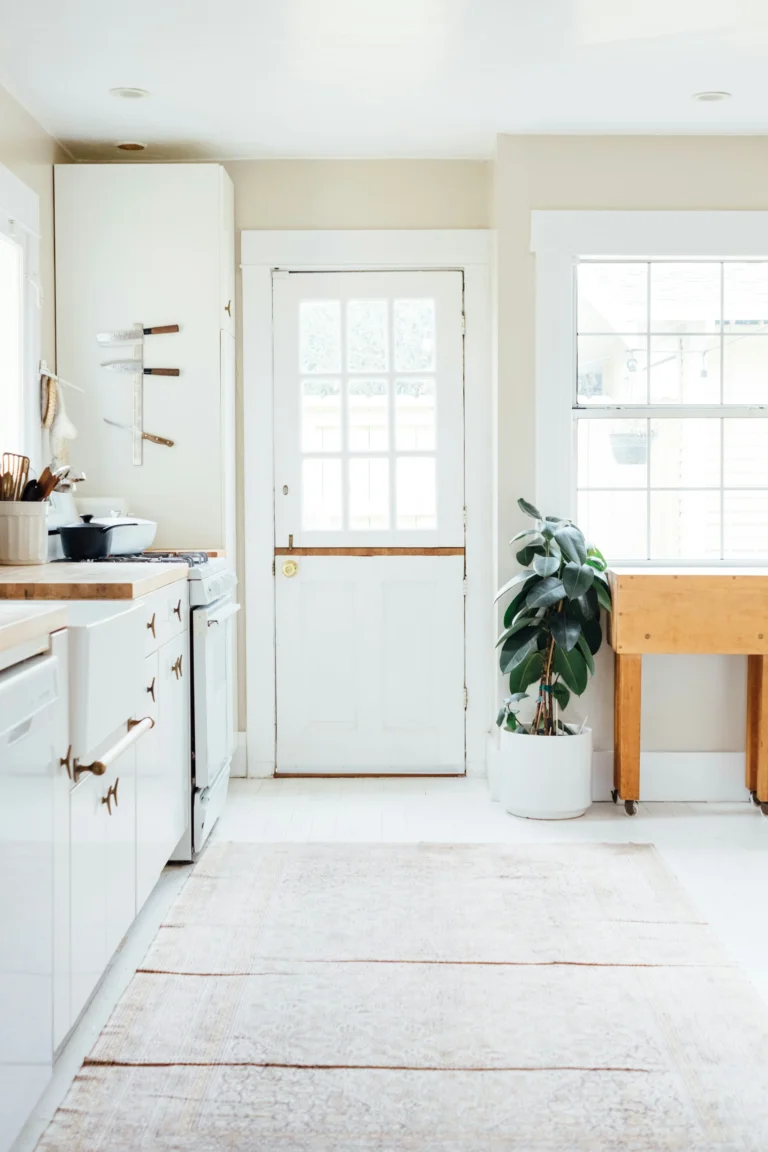I realised today that I began writing on this topic well over a year ago.
It’s funny, I transitioned our bathroom, laundry and other areas efficiently.
The kitchen though, given it is my hub and what I consider to be the most important area for managing our largest commodity (FOOD) has been my toughest conquest.
There have been many steps involved in transitioning this area of my home. This is also where I saved the majority of our $24,000 last year. And the largest reduction in our household waste and eco-footprint has happened here also. I’ve decided to split my journey into separate parts so as not to overwhelm all of us! Here is the first of a few notes on the deconstruction of the Green Foot Mama kitchen…
1. Declutter First
Reduce all appliances, broken, lidless containers and anything else that doesn’t work.
This is tough but I eliminated 7 appliances and kept just one that performed the same functions as the other ones.
With appliances go for ones that have sturdy parts and good warranties. I went for the Thermomix, but there are several other machines that do a similar job.
Once reducing containers and other jars with missing lids, my cupboard had loads more room. Many containers became pots for Mini-Green Foot’s ever growing food garden.
Appliances were sold or given away locally. Smaller jars and containers were recycled.
Move on all icky non-stick and other coated pans and trays. Not only are these toxic, they don’t last forever. Convert to even one great 18/10 stainless pan and one or 2 saucepans that will last a lifetime and not leach dodgy chemicals into our bodies.
2. Reduce plastics as much as you can
When buying items for your kitchen, go for reusables such as glass and stainless steel.
Food storage is really important. A great set of airtight jars and containers are well worth the money spent. I use Lock and Lock glass ones. They have a great replacement warranty on parts and area quality product.
An alternative is buying food packaged in glass jars (rather than plastic) and in larger sizes means that you will be left with a gorgeous jar to add to your stash once the contents are used up. I found I began finding recipes to handmake gifts for loved ones, totally inspired by the styles of jars I was collecting. Another thrifty and heartfelt bonus of this process!
Avoid biodegradables. “What?” I hear you say.. Biodegradables use energy to produce too. And, they still need time to break down, and not all do completely. At first I was using compostable bags, cling wrap and recyclable foils, but felt like I was still spending money on things that were going straight into the bin.
This definitely had a positive impact on my conscience and my wallet.
Eliminate cling wraps and the like. These use energy to produce and end up sitting in landfill forever! Do what our Grans did and upturn a plate or bowl over food that needs covering. Use glass airtight storage containers, or make some beeswax wraps.
3. Clean out the pantry
This was my worst job ever!
Clearing everything off shelves, tossing what is out of date, and wiping shelves over for repacking felt quite liberating by the end. By making an area for things that needed using sooner, I was able to not have anything else go out of date and be wasted.
Repackaging food into proper storage also helps visually see what you do and don’t have in your pantry. And its great when you are meal planning on the fly.
My very handy 3 from 1 rule: don’t buy anything unless it has more than one use. If you want to get even tougher, make it 3! This rule was great for the entire Green Foot Journey overhaul, but I felt more connected with this in the kitchen.
Perhaps it is because I shop for food more regularly than anything else?
Put simply, unless an item or ingredient benefits you in more than one way, don’t buy it.
One strange example we discovered along the way was pantyhose. My eldest uses these in winter sometimes. But they also are great for straining our nutmilks, sprouting sprouts in jars and tying our tomatoes and beans to stakes to hold them up. Nut milk bags alone can cost up to $20..
4. Avoid pre-packaged
Avoid buying pre-made, prepackaged products and cook from scratch instead.
This seemed overwhelming, but food planning, being resourceful and learning how to make great meals out of limited ingredients helped a lot. Knowing what ingredients were entering our bodies was quite empowering, and over time both my and the girls immunities certainly strengthened.
Reduce packaging and food wastage by buying pantry staples in bulk, and perishables in smaller amounts, more frequently. This felt overwhelming to begin with, but now I have it down pat. I have one day a month for meal planning. One day to order my bulk dry goods and a small shop or trip to the farmers markets each week ensured we were eating fresh and local ingredients, without food wastage.
5. Freeze ahead
Cook meals in large batches while food is fresh, and freeze.
I really appreciate this one. Having two very small children close in age, a hungry growing teen combined with being a ‘double-parent’ and having to work and study meant some nights were a complete nightmare in every sense.
With dinners prepared and ready to go, crazy nights became relaxed nights and everyone was happy.
– Be food smart (a whole ‘nother post coming soon)
xo


